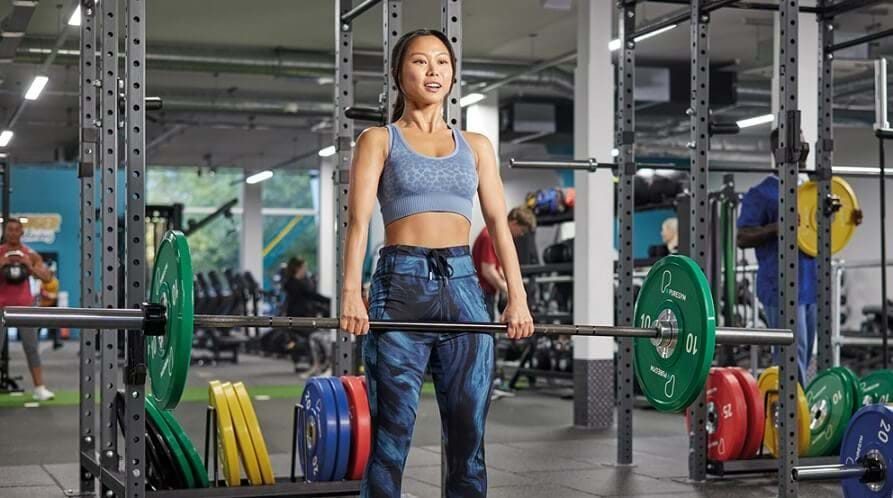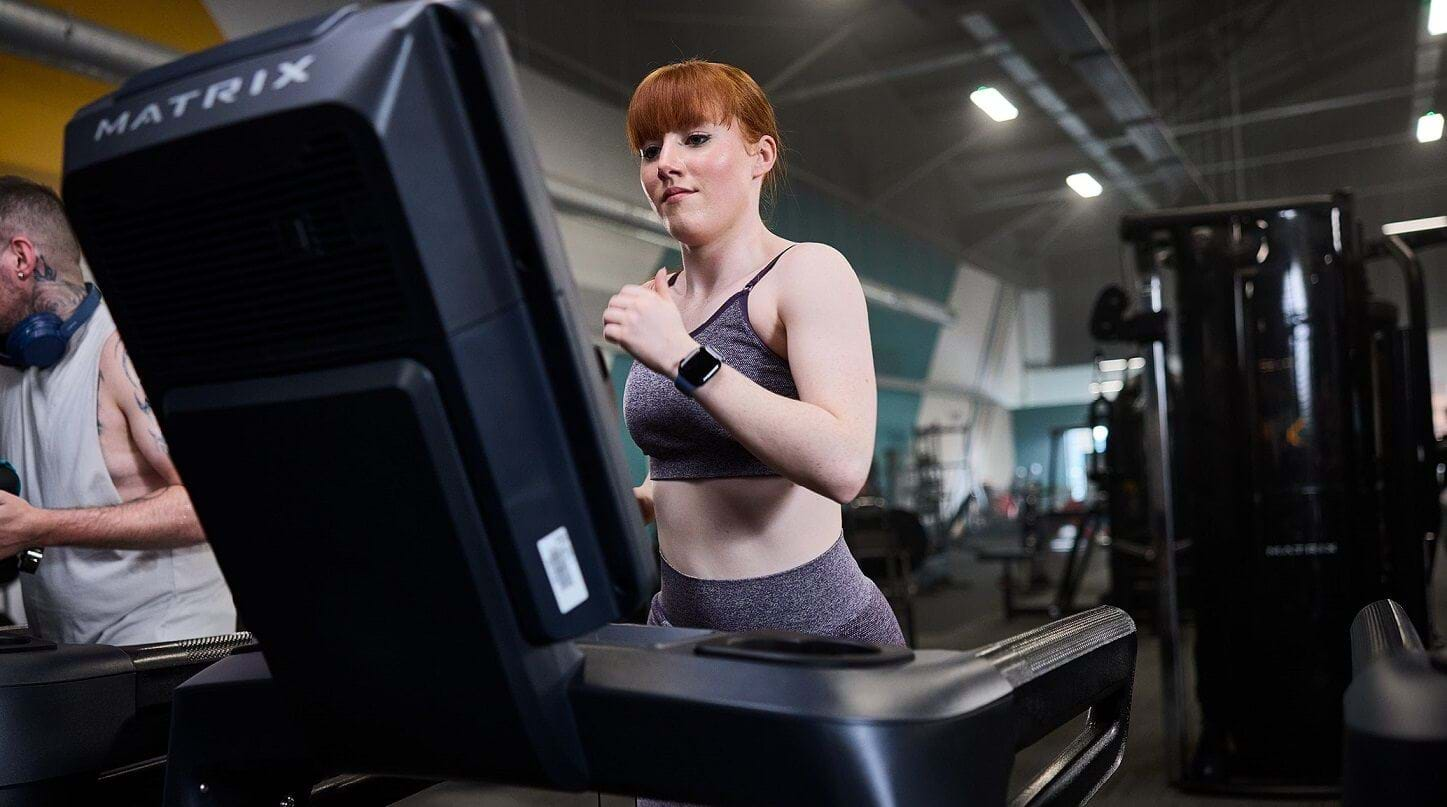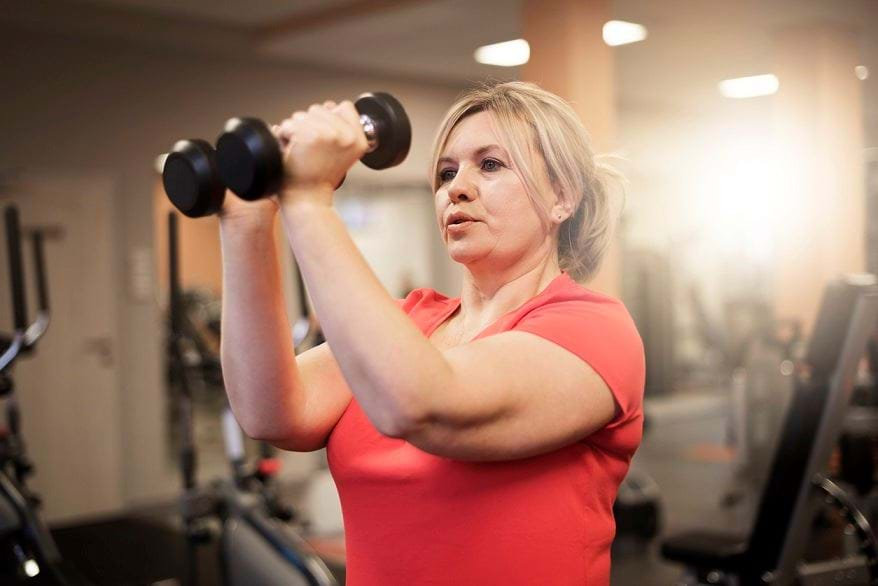Combining Cycling and Weight Training for Peak Performance

Do Weights Improve Cycling | Benefits | Finding Balance | Best Exercises | Workout Programmes
When it comes to improving your cycling performance, cycling itself can only take you so far. Combining cycling and weight training is a great way to build strength, power, and endurance to take your cycling to the next level, while reducing the risk of injury.
In this article, we look at the benefits of having a cycling and weight training plan, what exercises you should include, and how to create a cycling specific weight training schedule.
Does Weight Training Improve Cycling?
Yes - weight training can help to improve your cycling performance. There are a few ways it does this:
Increased endurance. Weight training increases muscle strength. The stronger the muscles are, the less fatigue they'll experience when cycling, which means more endurance on your rides.
Improved cycling economy. Strength training has been shown to help muscles use oxygen more efficiently, meaning you can produce more power for the same metabolic cost.
Increased speed. Strength training increases the ability to recruit more muscle fibres as well as the power of these muscle fibres. This means you can generate more force when cycling, increasing the speed.
Additional Benefits
Strength training doesn't just help with cycling - it has longevity and quality of life benefits too.
Increased muscle mass. As we age, our muscle mass naturally declines which can lead to weakness and endurance as well as poor metabolic health. Weight training combats this decline and can help to build muscle mass.
Better bone density. Cycling is low impact so while it is great for cardiovascular health, it doesn't create the necessary stress needed to increase bone density.
Stronger and more resilient joints. The stronger the muscles are supporting the joints, the stronger the joints.
Reduced muscular imbalances. Strength training can help to strengthen the muscles used in cycling, but also strengthen muscles which are neglected to prevent muscular imbalances.
Injury prevention. The combination of stronger joints and reduced muscular imbalances mean you are at less risk of injury both while cycling and in every day life.
Combining Cycling And Weight Training: How To Find The Right Schedule
One of the reasons cyclists are wary of incorporating weight training is because they don’t want it to negatively affect their performance. While this is a valid concern, it is possible to implement weight training without it harming your cycling.
Here is how to combine cycling and weight training in a way that works for you.
Only add 2-3 weight training workouts a week
When the main goal is to improve your cycling performance, there is no need to add too many weight training workouts to your routine. Training the legs twice per week is enough to stimulate strength and muscle gains without having an adverse effect on your cycling.
We would recommend training the upper body at least once a week too, to help prevent imbalances and improve overall strength and composition.
Across the week, this could be:
1 x lower body, 1 x full body
2 x full body
2 x lower body, 1 x upper body
Avoid weight training before cycling
Do not plan to do your cycling after weight training, either on the same day or on the day after if it’s been a particularly heavy leg session. Weight training fatigues the muscles for at least 24 hours, so it’s best to avoid weights the day before a long or intense bike ride. Try to avoid cycling and leg workouts on consecutive days, but if you must do them two days in a row do cycling first!
You may find you prefer to do both cycling and weights in one day. In this scenario, we’d recommend cycling in the morning and weight training later in the day.
Keep your rest days
Rest days play a key part in getting stronger and fitter - it is when our bodies work on repairing the microscopic damage caused by exercising. Without rest, our bodies cannot recover efficiently and we are more at risk of injury and even a decline in performance.
The Best Weight Training For Cycling
Cycling predominantly works the lower body (the glutes, quads, hamstrings, hip flexors, and calves), with the core and upper body muscles helping with balance and stability.
However, while workouts for cyclists should aim to strengthen these muscles, it’s important not to neglect the rest of your body. Ignoring major muscle groups can lead to muscular imbalances, causing poor posture, pain, and injuries. If cycling is your main form of exercise, it can be common to get extremely weak and tight in some areas due to underuse or use in a limited range of motion. Strength training can help to combat this issue.
Strength exercises for cyclists
Squats. Squats are one of the best quad strengthening exercises available. There are plenty of squat variations to choose from - if you're new to strength training, start with bodyweight squats and build up to weighted versions.
Deadlifts. Deadlifts strengthen the posterior chain, particularly the hamstrings and glutes, and can help to improve range of motion. These are great for overall lower body strength while improving hamstring tightness.
Single leg exercises. Single leg exercises like Bulgarian split squats, lunges, step ups, and single leg deadlifts help to improve strength and stability while reducing imbalances between the weaker and stronger leg.
Explosive lower body exercises. Plyometric exercises like box jumps and kettlebell swings improve leg strength and power while working the cardiovascular system.
Hip thrusts. Hip thrusts and glute bridges help to strengthen the glutes, a key muscle used in cycling. Combined with a strong core, having strong glutes is a great way to protect the lower back.
Calf raises. Seated and standing calf raises are great for strengthening the calves and improving ankle stability.
Leg raises. Seated, hanging, and standing leg raises all target the hip flexors, the muscles responsible for bringing the leg up.
Face pulls. Face pulls work the upper back and are a great way to lengthen and strengthen these muscles which are often weak and tight from hunching over the handlebars.
Gorilla rows. This row variation works the mid back while improving hamstring flexibility and endurance, both areas which are neglected in cycling.
Bench press. This is a great upper body exercise which strengthens the shoulders, chest, and triceps, making it a great move to include in your upper body workouts.
Renegade rows. Renegade rows combine the plank with dumbbell rows, working the core, back, and shoulders.
Kettlebell marches. The overhead kettlebell march strengthens the hip flexors and core while improving balance, coordination, and shoulder stability.
Planks. Planks are a great way for improving core strength and stability, with plenty of plank variations to choose from.
Bird dog. This core strengthening exercise also improves balance, coordination, and stability.
Example Cycling And Weight Training Programmes
If you don’t feel like creating your own workouts using the exercises above, try following one of these programmes below. We’ve included a 2 and a 3 day programme – choose the one that works best with the amount of cycling you do.
Always start with a warm up and finish with some stretches.
2 Day Weight Training Plan
This is a moderate weight, moderate volume workout. Aim for a weight that allows you to finish your reps with good form, with the last couple of reps being a challenge.
Workout 1 - legs and core
Bulgarian squats - 3x 8-12 reps
Deadlifts - 3x 8-12 reps
Box jumps - 3x 6-10 reps
Step ups - 3x 10-15 reps
Bird dog - 3x15-20 reps
Plank - 3x max holds
Workout 2 - full body
Renegade rows - 3x 12-15 reps
Bench press - 3x 8-12 reps
Single leg deadlift - 3x 10-15 reps
Squats - 3x 8-12 reps
Kettlebell swings - 3x 10-15 reps
Face pulls - 3x 8-12 reps
3 Day Weight Training Plan
This plan has an additional lower body workout which includes some exercises with higher weights and lower reps to ramp up the strength even more.
Workout 1 - legs and core, heavy
Barbell squats - 5x 5 reps
Deadlifts - 5x 4-7 reps
Hip thrust - 4x 6-8 reps
Standing calf raises - 4x 6-8 reps
Plank - 3x max holds
Workout 2 - legs and core
Single leg deadlift - 3x 10-15 reps
Bulgarian split squat - 3x 8-12 reps
Kettlebell swings - 3x 10-15 reps
Box jumps - 3x 6-10 reps
Bird dog - 3x 15-20 reps
Workout 3 - upper body
Lat pulldowns - 3x 8-12 reps
Bench press - 3x 8-12 reps
Dumbbell shoulder press - 3x 8-12 reps
Face pulls - 3x 8-12 reps
Renegade rows - 3x 10-15 reps
If you're looking for more workouts to improve your cycling, check out our blog on yoga for cyclists here. Find your nearest gym here so you can start your training today.


